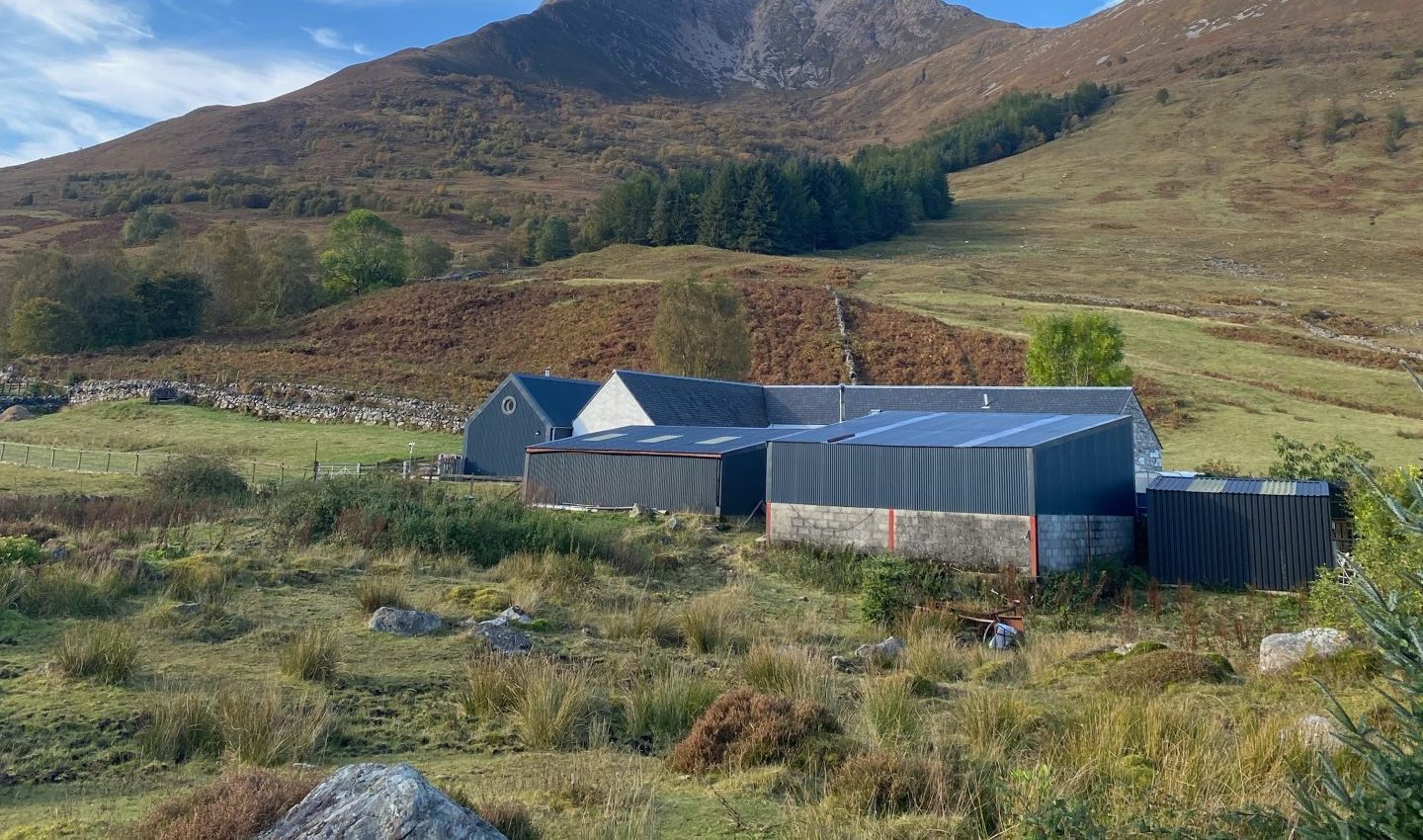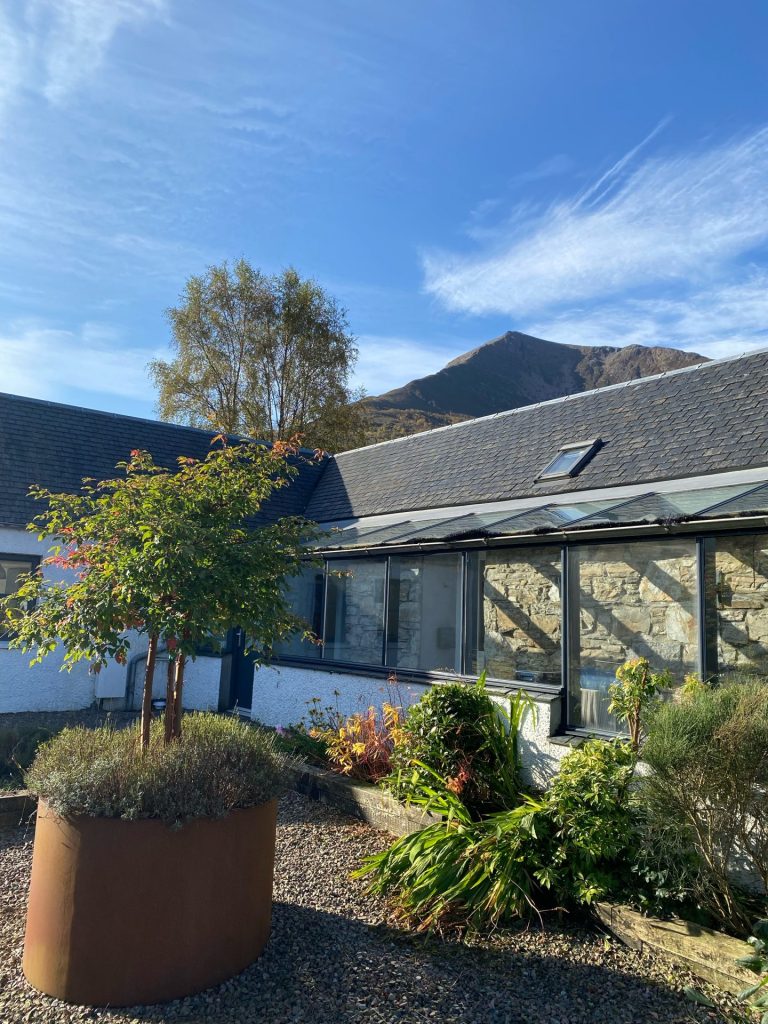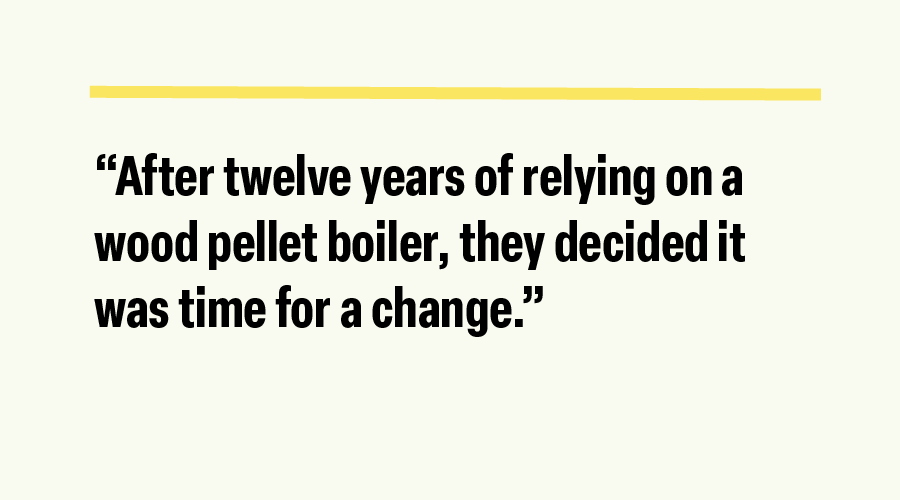The Jackson’s Case Study: A Sustainable Highland Transition with IMS Heat Pumps

As the UK accelerates its efforts to reduce carbon emissions and tackle climate change, more households are making the shift towards renewable energy sources. Heat pumps, in particular, have seen a surge in popularity. In line with the government’s goal of phasing out gas boilers by 2035, many homeowners are choosing air and ground source heat pumps as more efficient and environmentally friendly alternatives. The UK’s heat pump market continues to grow rapidly, with installations doubling in recent years. According to the Heat Pump Association, over 67,000 units were installed in 2022, reflecting a growing public interest in reducing both carbon footprints and energy bills.

This rise in adoption is driven by a combination of government incentives, improved technology, and growing awareness of the environmental and cost-saving benefits of heat pumps. For many homeowners, switching to a heat pump not only provides better control over energy use but also represents a significant step towards future-proofing their homes in an increasingly eco-conscious world.
Among those who have embraced this renewable technology are Andy and Jane Jackson, a retired couple living in a converted croft on the edge of Ballachulish, near Glencoe. Their story highlights the benefits of transitioning to more sustainable home heating options, offering insight into the impact a heat pump can have on both home comfort, quality of life and long-term energy costs.
The Jackson’s
Andy and Jane enjoy spectacular views stretching from the foot of the Beinn a’ Bheithir mountain, southward across the hills and valleys. When the retired couple sit and look out their window, they enjoy a stunning vista and a front-row seat for the dramatic storms that pass through the area. This part of Scotland is known for its weather extremes as much as its stunning nature.
It was here, in this breathtaking landscape, that the Jacksons’ journey towards sustainability began. Over twelve years ago, they renovated their home to make it more energy efficient, installing new windows, insulation, and underfloor heating. They installed solar panels, a home battery, and switched to an EV, aware that these steps could significantly help them negate their carbon impact.
Life Before the Heat Pump
After twelve years of relying on a wood pellet boiler, they decided it was time for a change. The increasing costs and effort required to maintain the pellet boiler motivated them to explore more sustainable options. Andy explained, “We became concerned that the work of clearing the ash and adding new pellets would become more troublesome with age.”

There was a time when the wood pellet boiler seemed like the best option, but that had changed. “The price of wood pellets had more than doubled since its installation,” said Andy. And there were other factors to consider, too. As they spent much of their time travelling, they wanted a smart, connected heating system, ensuring their home was warm upon return. “It’s important to us to have a reliable [heating system] that we can control remotely, so we can save energy while we’re away,” he added. Their old system, though functional, required manual maintenance and wasn’t ideal for their lifestyle. It was far from smart; returning home meant walking into a cold house, fussing with pellets, and having to wait while the home warmed up.
Choosing Between Air Source or Ground Source Heat Pumps
The couple had been following the advancements in heat pump technology for some time. After researching their options, they decided that an air-source heat pump (ASHP) was the best choice for their home due to its efficiency and lower cost. “Originally, we had thought a Ground Source Heat Pump might be our best option, but after careful research, we decided to go for an ASHP,” Andy noted.
While on the surface their land seemed well suited to a ground source system, the soil wasn’t deep enough for an efficient installation. With the improvements in air-source heat pump technology, an ASHP was clearly the better option for the Jackson home.
Funding and Payback
Switching from fossil fuel heating to a heat pump, typically comes with an array of financial, government backed options. However, in some cases, including the Jacksons, these don’t always apply when you use other fuels.
Available in England and Wales the Boiler Upgrade Scheme (BUS) provides grants of £7,500 towards the installation of heat pumps and £6,000 for ground-source heat pumps. Homeowners can easily apply through their heat pump installer. While, in rural Scotland, homeowners can receive a grant of up to £9,000 to help with the installation costs of a heat pump as well as additional funding in the form of an 0% interest free loan, repayable over 10+ years.
Given the wood pellet boiler they had is already classified as a “renewable” option, the Jackson’s were ineligible for funding for an upgrade. Their Installation was a fairly typical £14,000 and if they had been eligible for the Scottish Rural Grant they would have paid around £5,000. This would give a fantastic payback of just under six years compared to the 12 years currently.
Finding a Reputable Installer
The UK now has around 11,000 qualified heat pump installation engineers to choose from. Better than a few years ago, but not yet close to the UK target of 33,000. With the decision to switch made, the Jackson’s began their search to find a reputable local company to complete the install. They found themselves considering IMS Heat Pumps (part of the Hometree Group), whose expertise in both ASHPs and the unique requirements of the Scottish Highlands made them the ideal choice. “Our online research and word of mouth recommendations led us to IMS Heat Pumps,” said Andy.
Organising the Installation
The couple appreciated the smooth process of organising the installation. Andy recalled, “Throughout the process, there was clear and frequent communication with the IMS Perth office.” The project involved replacing the old wood pellet boiler, which was housed in an outdoor shed. IMS’s team carefully evaluated the distance of the underground pipes connecting the boiler to the house and recommended the optimal location for the new system. “Following discussions with Vaillant, IMS recommended siting the unit just outside the shed, reusing the underground pipes,” Andy explained.
Installation Process
When installation day arrived, IMS’s two-man team worked efficiently, completing the project in just three days. Speaking of the convenience, Andy remarked, “The team worked diligently and well, and we were without hot water for a maximum of two hours.” IMS also ensured the couple were fully trained on the system’s controls, including the Vaillant app, which allows them to remotely monitor and control the pump from anywhere in the world. “The testing and teaching day really helped us feel confident with the system,” added Andy. With the app in hand, the Jacksons were free to travel, see family, and return home knowing the house could be remotely warmed for their arrival.
Costs and Value for Money
Any fan of home makeover or renovation television knows that these projects rarely come in on time or on budget. However, Andy was pleased with the installation timescale and noted, “…the installation came in on budget with no unexpected costs.”

While it’s still early days since the installation in August, they are already seeing savings on their energy bills compared to what they would have spent on wood pellets. “We are spending less on electricity now, thanks to the Intelligent Octopus Go tariff, which gives us cheap overnight rates for producing domestic hot water,” he said.
Impact on Daily Life Post-Installation
The ASHP has already made a noticeable difference to the couple’s comfort levels, even though they have yet to experience the full force of the Scottish winter weather.
Prior to installation, the heat pump performance estimate showed a reduction in running cost of £868/year equating to a “payback period” of just under 12 years. “So far, the heat pump is keeping the house at a constant temperature, using less than half of its potential,” Andy explained. They feel confident the system will continue to improve their home’s comfort during the colder months and may deliver payback in less time than the initial estimate.
Quality of Life and Comfort
The couple’s new heat pump has not only provided a more comfortable living environment but has also reduced the manual work involved in maintaining their heating system. “We now have a house that’s heated more cheaply, more effectively, and with less effort than before,” Andy said. The ability to control their system remotely offers them peace of mind while travelling, and the consistent warmth in their home allows them to enjoy the dramatic views from their property, regardless of the weather outside.
Customer Service and Satisfaction
IMS strives to deliver great service and total customer satisfaction alongside every high-quality installation. This starts long before engineers arrive on-site and continues after the heat pump is turned on. Reflecting on this, Andy explained, “The installation team kept us up to date with their progress and provided detailed information on completion.” He added that the heat pump performance even exceeded expectations: “The performance we are getting is, if anything, better than predicted.”
Final Thoughts and Advice
For anyone considering switching from a traditional boiler system to a heat pump, Andy’s advice is clear: “Get someone knowledgeable to look at your property, and if they think it will work, go for it.” He and Jane strongly recommend IMS Heat Pumps, emphasising the ease and professionalism of the entire process. “The whole process was easy, stress-free, and professionally handled. We now have a house that’s nicer to live in, cheaper to run, and should be future-proof, while also being good for the environment.”


